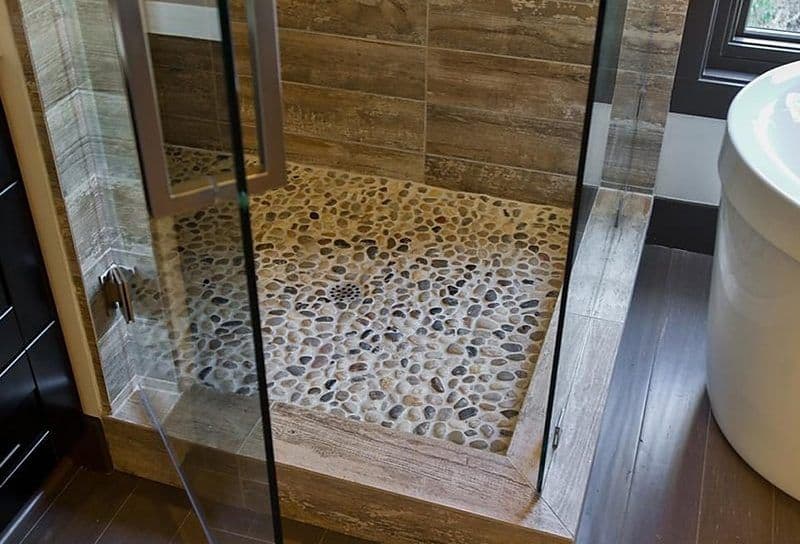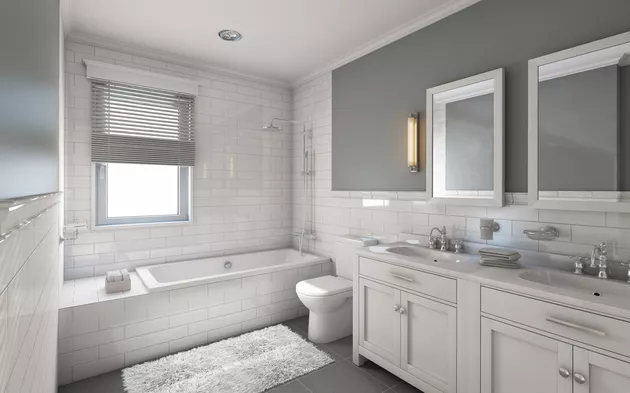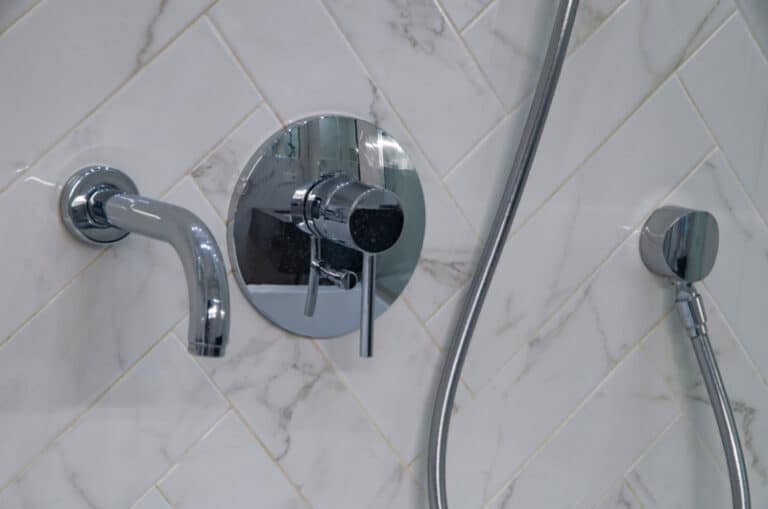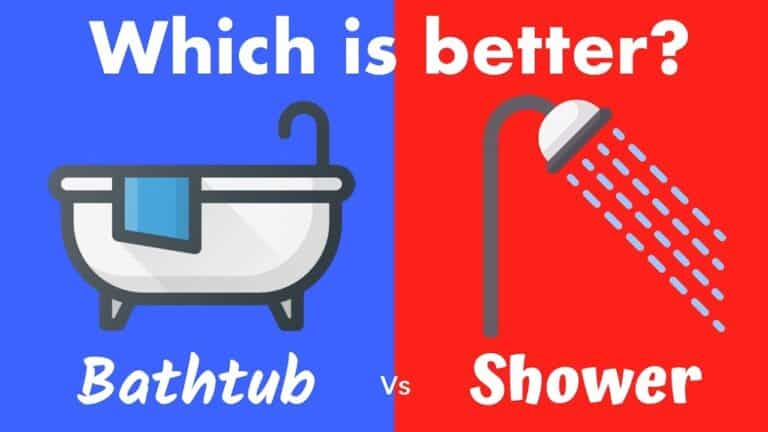The Pros and Cons to Having a Pebble Shower Floor

Pebble showers have become popular, eye-appealing flooring options for homeowners who are considering a bathroom remodel. They offer a distinct, spa-look aesthetic to any shower and often provide a design focal point for the entire bathroom.
However, deciding on any facet of a bathroom remodel, including that of a pebble shower floor, should not be taken lightly or without sufficient consideration and thought. These visually stunning floor-covering options will certainly make a statement; however, making a final, long-term decision requires a well-thought-out analysis. The table below summarizes the various pebble shower floor pros and cons
Shoud You Use a Pebble Shower Floor?
| The Pros | The Cons |
| Pebble Shower Floors Offer a Beautiful, Durable & Unique Finish |
Pebble Shower Floors Require High Maintenance Compared to Other Types of Shower Floors |
| One of the most popular features of a pebble shower floor is that it offers a natural but unique design for your newly remodeled shower or bathroom. These shower floor designs offer durable options that might require a few repairs occasionally, but mostly just a regular sealant to ensure water is encouraged to repel and not collect. Pebbles provide a natural finish and feel reminiscent of a babbly brook of water over a bed of rocks. Pebble stone is a great option for those remodelers or designers who like the feel of natural or synthetic stone and the simplicity the look offers. The color options depend on whether you choose natural or synthetic stones. | While all showers must be cleaned regularly, a shower with a pebble floor will likely require more cleaning and effort than one without this type of floor. This is required to ensure pebble floors stay clean and properly maintained. This means that pebble floors require more than a quick cleaning because a typical scrubbing (with harsh chemicals) should be avoided to avoid damaging the grout. Grout and sealant are porous (i.e., they can absorb water); they need to be sealed when installed and resealed on a regular basis to ward off moisture and, thus, damage to the shower floor. A small problem can grow into an extensive, costly repair – so do not wait to fix a minor repair. |
| With Patience & DIY Skills – Pebble Shower Floors are Easy to Install |
Pebble Shower Floors Tend to Have Water Retention Issues |
| For those property owners with some experience and a bit of do-it-yourself ingenuity, installing a pebble shower floor should not offer any type of real challenge. If it is your intention to collect the pebbles yourself (which is a smart way to keep the cost of the floor down), remember that gathering pebbles takes time. And you really can’t begin before you have collected enough tiles to basically get the job done. The application of the pebbles to the floor requires creative patience, but that, too, is not difficult if you give yourself enough time to do the job right. | By their very definition, a pebble shower will have an uneven or inconsistent texture. The nature of this type of floor allows water to collect or stick on (over and around and in-between) individual-placed pebbles. Unfortunately, the result of this standing water leads to mold and mildew – especially in poorly ventilated areas that have moisture-filled shower walls and floors. Shower pebble floors are designed to create interesting ridges and hidden nooks and crannies, which means, by their nature, they provide a bigger potential breeding ground for mold and mildew. This requires more maintenance. A deeper gradient on the floor can help prevent standing-water build up. |
| Pebble Shower Floors Offer Budget Friendly Remodeling Options | Pebble Shower Floors Can Hurt the Sole of Sensitive Feet |
| When getting ready to install the shower floor, you will only need simple working tools and basic supplies. Installing a pebble shower requires no need to rent (or purchase) expensive and heavy necessary tools like tile cutters, etc. This helps to reduce the overall cost of the remodel. | The type of pebbles you select must be rounded and of similar shape and size. Otherwise, the size or shape of the pebble may hurt sensitive feet when showering. Some people (who love the look but have sensitive feet) choose to wear waterproof footwear. Consider opting for a flat, more traditional shower floor if someone with sensitive feet will use the shower. |
| Pebble Shower Floors Offer Natural Slip Resistance |
Pebble Shower Floor Installations Require Tremendous Amounts of Grout |
| Pebble flooring, by its nature, provides a great deal of grip and traction compared to a traditional shower floor. Even if the pebbles have a slippery, individual feel, the grout (and its naturally rough texture) required to install the pebble floor ultimately creates traction for someone using the shower. This provides a bit of added safety against falling in the shower. Pebble shower flooring will likely make bath mats or ‘rubber ducky floor stickies’ a thing of the past, as the natural traction does the trick without the need for plastic safety options. | Installing the pebbles as a shower floor is the creative and easy part of the shower renovation. The way the pebbles are laid offers limitless options. Some shower pebble stone flooring comes attached to nylon webbing (mosaic backing) squares to make installation easier. The grouting of a pebble shower floor is where the process may become a bit more challenging. Between each pebble placement, there is a space that must be covered with grout properly. In the end, the extra grout requires additional work to complete the job and additional regular maintenance and sealing. Note that choosing to use large pebbles/stones can help make this less of an issue. |
| Pebble Shower Floors Provide Potential Therapeutic Benefits | Pebble Shower Floors are Not Suitable for Use With Hard Water |
| Walking barefoot while showering on a floor made of pebbles mimics the effects of a reflexology massage. This type of massage (which also can be applied to the hands) has the potential to stimulate reflexogenic points (on your feet) that are connected to organs and other parts of your body. Studies suggest that reflexology applied to the feet can reduce stress and improve other symptoms of chronic issues. Note that those with sensitive feet may find this type of massage outside of their comfort zone. | Hard water, which refers to a type of water with high contents of minerals – magnesium and calcium, can be found in a water well or through a city’s water system. Hard water has the potential to leave a chalky film on a shower pebble floor which requires regular cleaning and maintenance. This issue can be overcome if you take the time to dry/squeegee the floor after each shower. |
The Take-Away
From a creative perspective, the idea of installing a pebble shower floor can be quite appealing and the perfect element to perfect your design vision. But before you get too enthusiastic, remember that these types of shower floors require extensive maintenance, frequent resealing, and the need to dry/squeegee the floor after each use.
But those who find the idea of collecting, installing, and using a pebble shower floor appealing (and are okay with the additional regular maintenance), will find they can create a visually stunning addition to any size or type of shower enclosure. These types of shower floors also offer the opportunity to create one-of-a-kind designs.
In traditional home bathrooms, pebble shower floors are not generally considered practical.
FAQS
Does pebble stone flooring take more time to install?
Because these types of shower floors use more grout, there is generally more labor required to complete the installation appropriately.
How often do you need to reseal a pebble shower floor?
After the initial sealant is applied to waterproof the pebble shower floor, it is recommended that the pebble shower floor be resealed at least every year and for as many as six months, depending on how often the shower is used.
When, from a practical perspective, will using a pebble shower floor will work?
If the pebble floor you intend to install will be put in a shower in a vacation home or is an extra bath (i.e., a shower that is not used frequently), the maintenance issues may become a less relevant issue when deciding if the pebble shower is the right choice for you. In addition, if your shower is located in a home in a dry climate, the water will evaporate and require less maintenance.
You can also read:






